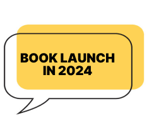

Persona InfluentiaLDesigner
of an
A modern playbook of Design.


”This book is badly needed.Design of everyday things (DOET) is an elementary primer. This book addresses what really goes on in design activity. It is a powerful addition to my introduction. I like the outline and the commentary by leading designers, people who are involved in practice..... So i wish you great success, because you are talking about the real world of practice. A badly needed book”
- Don Norman
01


Why
Well, world is changing fast in front of our eyes. AI is today what internet was a few decades ago, there’s no undo here. With these tectonic shifts in technology, there’s one field of work which keeps it sane for all of us (users) …. Design. Design plays a role similar to a mediator i.e. someone who can understand both sides and help them to connect better.
Design has been evolving. Pre-internet design used to be about physical products, like a chair, an oven, a car. These things required one good shot at design, almost a perfect one, and then the product existed amongst people. Post-internet, specially post iPhone, design is a lot about digital products, like a website, an app. These things require one good shot at design, imperfect one is fine, and then the product evolves amongst people, and designers keep learning from people and keep taking more shots at adding or changing features. With AI, these products will live amongst people and take their own decisions. And designers will need to discover ways of continuously shaping such products.
But but but… these ways that I mentioned aren't so easy to discover, or to execute. In fact, even for products of the day… designers in industry take very long to be effective or to be influential. This is because contemporary design education still focusses on building the fundamental skills, these are aligned towards the pre-internet ways of designing i.e. one-perfect-shot. The industry however works with iterations and continuity, these demand design to include feedback cycles from users, to monitor multiple versions of same product, to create bold bets and have tactical releases fit into it, to make a product work within a suite of other products/features and design systems, and they demand significant soft skills to influence your team, other teams, and leaders. The count is endless, and designers typically spend a significant amount of career before they can do justice to their creative potential. This is a painful learning curve, often takes years of energy and reflection.
This book aims to make it easier for designers. It will juxtapose the convoluted realities of the industry against the idealistic learnings of (design) education and help designers discover perspectives and practices, and debunk BS, to become more influential. This book will be a candid, simple and pragmatic take, based on insights from the best designers in the industry, on how to go about designing in today’s age.

02


HOW
Just like how designers create anything by co-creating it with their users, I will co-create this book with 👉 you 👈.
Share your most fascinating design stories with me, some project that you worked on or some designer you worked with, where design was influential in solving a problem. How did the designer go about it, how did they innovate, how did they learn about the product and its history, how did they validate their ideas, how did they inspire others to execute, how did they bring a smile on the user’s face. Your stories are our validation.
Alongside, I am interviewing some of the most inspirational leaders in the industry. I will include their wealth of knowledge in addition to your stories.
And… to kick start this all, I have put together a list of important topics (see below).
Jump on, let’s "generate" this together! 🙌
Add to this book:
03


WHAT
This book will evolve as I learn more from design leaders and designers. Here are the topics I am expecting to cover:
Introduction to the contemporary design process, and the history of design
Fundamentals: Building a design mindset
Psychology of human mind
Imagining without boundaries
Vulnerability and self-expression
Enabling conversations
Focus and depth of work
Design as a lifestyle
Execution: Craft skills that bring designs to life
Strategy and Discovery
Guiding Principles and Information Architecture
Making sense of data
Ideation and validation
Prototyping
Partnering with stakeholders
Storytelling
Tooling
Design leadership
Design roles
Career growth
People management
(Design) Entrepreneurship
Design musings
Designing in startups vs corporates
Do we need PMs
Designing for inclusion
Creating a safe culture
Should designers code
Expressionism in Design
04


WHO
Back in 2004, as a fond student of mathematics and physics, I wondered if everything in life can be defined precisely using reasonable logic, and can be handled precisely by precedented processes. How wrong was I. Writing code taught me that writing it was the easier part, someone liking the outcome was the unknown, the unpredictable. I thought that design education could teach me to make it a bit more predictable, and it did. And it started an endless adventure into exploring how humans interact with technology.
Since then I worked on many forms of this interaction. I made movies, interactive movies, award winning ones, which helped me understand how a creator could connect with an audience, huge audience, without actually coming in front of them. I designed interfaces for consumer hardware products and car dashboards, they were digital interfaces, but involved much more than just that. And I designed softwares, many sort of softwares, mobile apps, web apps, websites, and for across different domains i.e. for accessibility, for healthcare, for messaging and social media, and for finance. I led design and formed teams at companies of varying sizes, including my own startup, then 1 to 100 stage startups, and then corporates.
So, I learned by burning my hands in these contexts, and landed on a pretty pragmatic understanding of how design can work effectively and how designers can execute their superpowers. After speaking and blogging about this since a few years, I am here, summarising my learnings and co-creating this book with you!
Sumit Dagar
TED Fellow
Rolex Laureate
Echoing Green Fellow
MIT TR 35 India
Pride of National Institute of Design (India)
Design Leader: Intuit
Head of Design: 1mg, Hike messenger
Founder: Kriyate
Designer: Microsoft Research, Frog Design, Whirlpool